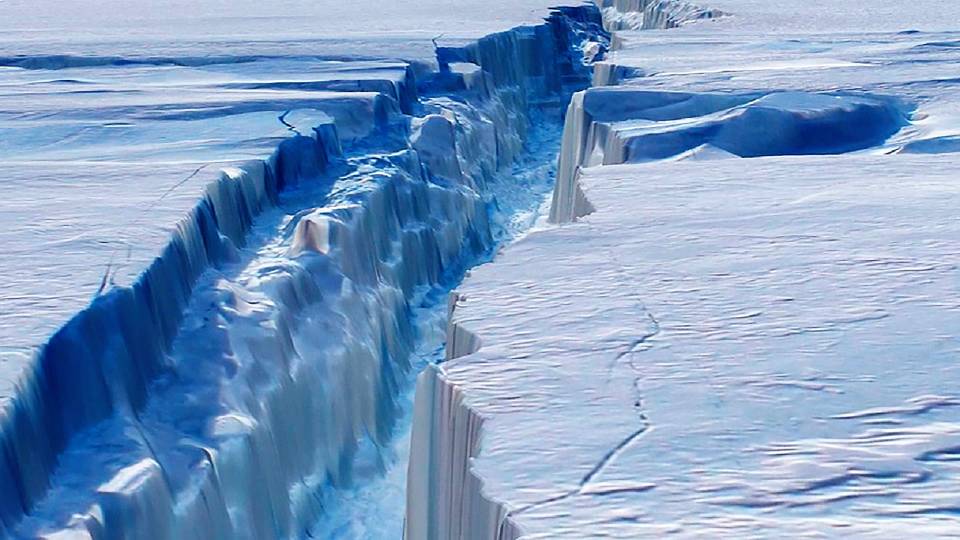Giant Iceberg Splits from Antarctic
One of the biggest icebergs ever recorded has just broken away from Antarctica.
The giant block is estimated to cover an area of roughly 6,000 sq km; that's about a quarter the size of Wales.
An US satellite observed the berg on Wednesday while passing over a region known as the Larsen C Ice Shelf.
Scientists were expecting it. They'd been following the development of a large crack in Larsen's ice for more than a decade.
The rift's propagation had accelerated since 2014, making an imminent calving ever more likely.
The more than 200m-thick tabular berg will not move very far, very fast in the short term. But it will need to be monitored. Currents and winds might eventually push it north of the Antarctic where it could become a hazard to shipping.
An infrared sensor on the American space agency's Aqua satellite spied clear water in the rift between the shelf and the berg on Wednesday. The water is warmer relative to the surrounding ice and air - both of which are sub-zero.
"The rift was barely visible in these data in recent weeks, but the signature is so clear now that it must have opened considerably along its whole length," explained Prof Adrian Luckman, whose Project Midas at Swansea University has followed the berg's evolution most closely.
The event was confirmed by other spacecraft such as Europe's Sentinel-1 satellite-radar system.
How does it compare with past bergs?
The new Larsen berg is probably in the top 10 biggest ever recorded.
The largest observed in the satellite era was an object called B-15. It came away from the Ross Ice Shelf in 2000 and measured some 11,000 sq km. Six years later, fragments of this super-berg still persisted and passed by New Zealand.
In 1956, it was reported that a US Navy icebreaker had encountered an object of roughly 32,000 sq km. That is bigger than Belgium. Unfortunately, there were no satellites at the time to follow up and verify the observation.
It has been known also for the Larsen C Ice Shelf itself to spawn bigger bergs. An object measuring some 9,000 sq km came away in 1986. Many of Larsen's progeny can get wound up in a gyre in the Weddell sea or can be despatched north on currents into the Southern Ocean, and even into the South Atlantic.
A good number of bergs from this sector can end up being caught on the shallow continental shelf around the British overseas territory of South Georgia where they gradually wither away.
Read the rest here.






















